Connecting a Weather Station to the Internet of Things
by Intel ICRI in Circuits > Sensors
5602 Views, 17 Favorites, 0 Comments
Connecting a Weather Station to the Internet of Things
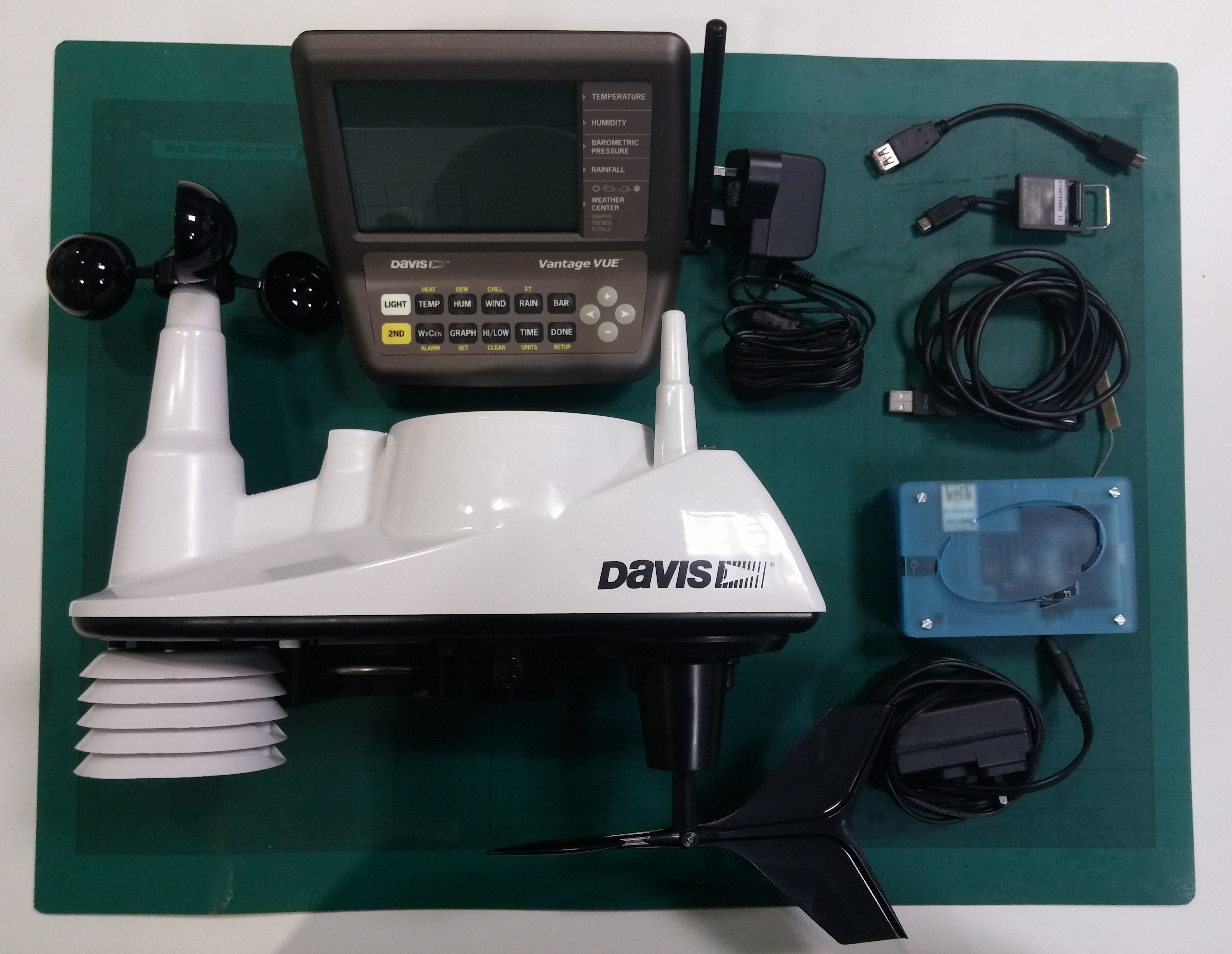
Hello and welcome to the step-by-step instructions for making your Davies Weather Station part of the Internet of Things using our Intel ICRI kit.
Using this kit you'll be able to connect your Davies Weather Station to an Intel Galileo, meaning you can view live weather data, look up historic and extreme weather data, and forecast the future by exploring weather patterns. From start to finish, putting together this kit should take between 5 and 10 minutes, not including setting up the Weather Station itself.
Let's get started!
Unpack Your Kit
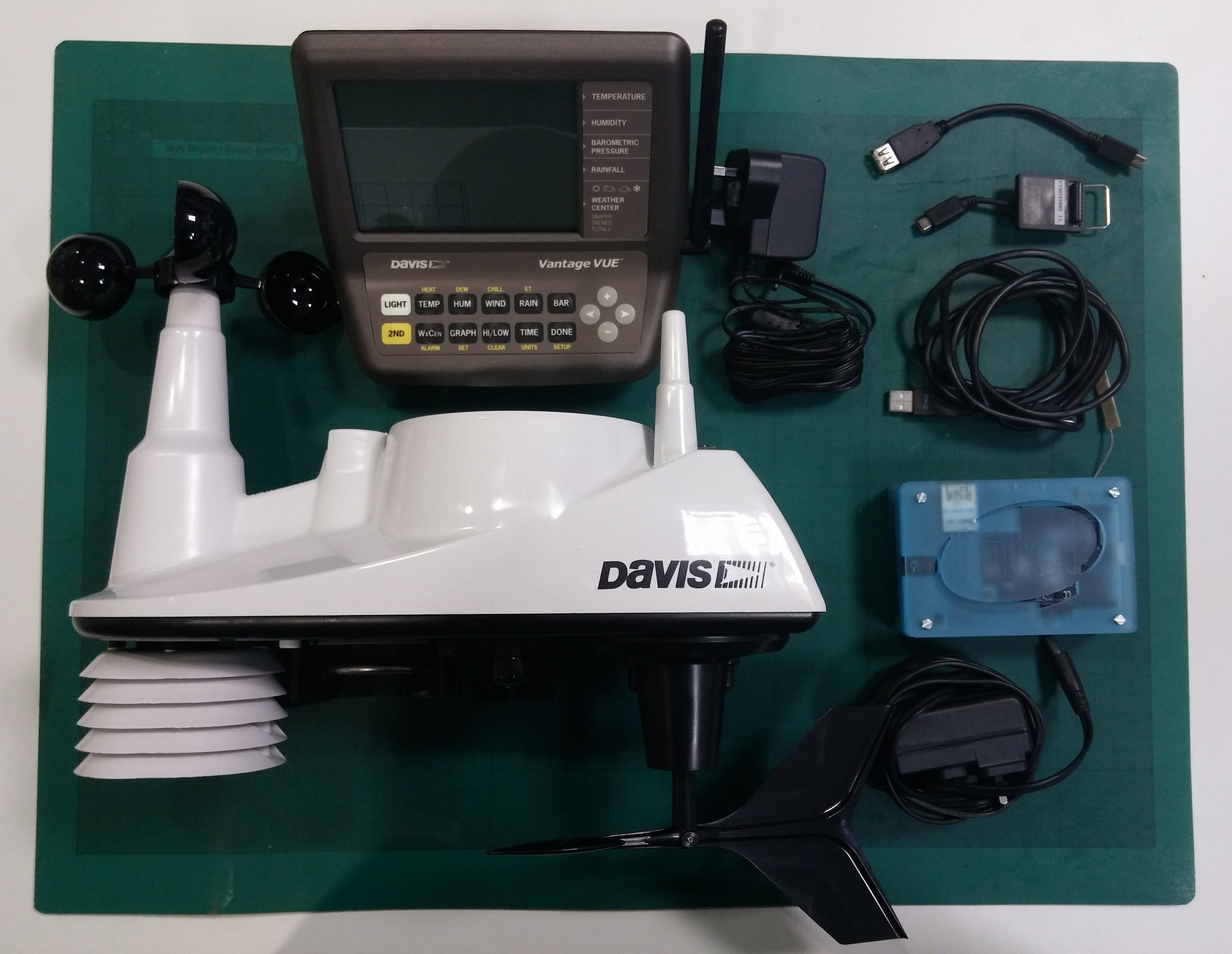
In your kit, you'll find the following:
- Intel Galileo with SD card and Wi-Fi card
- Power supply
- Micro USB male to USB female cable
You'll also need:
- A Davies Weather Station
- A Davies Console PSU and power supply (supplied with the Weather Station)
- A Weatherlink Serial Converter and USB (available here)
Connect Your Devices
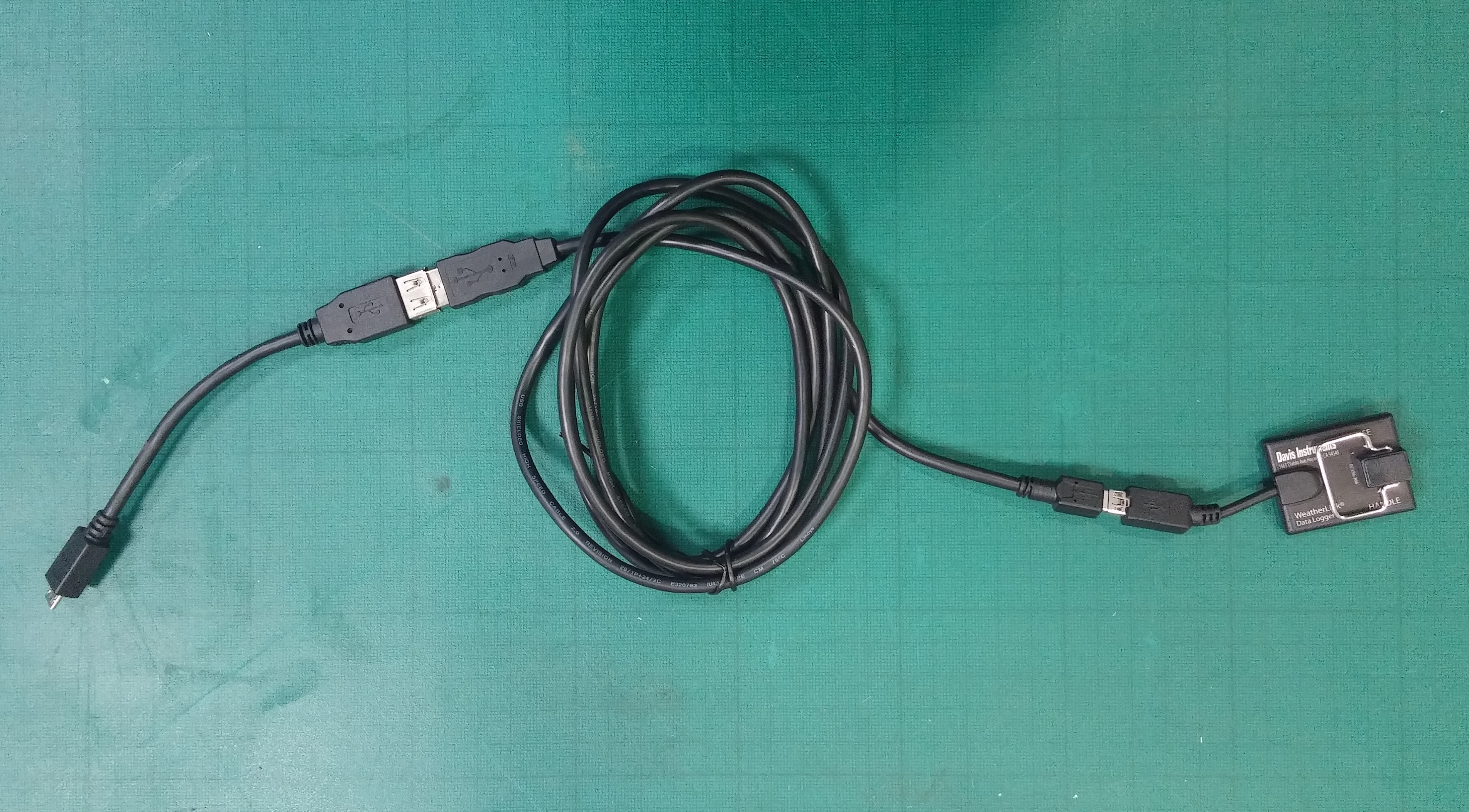
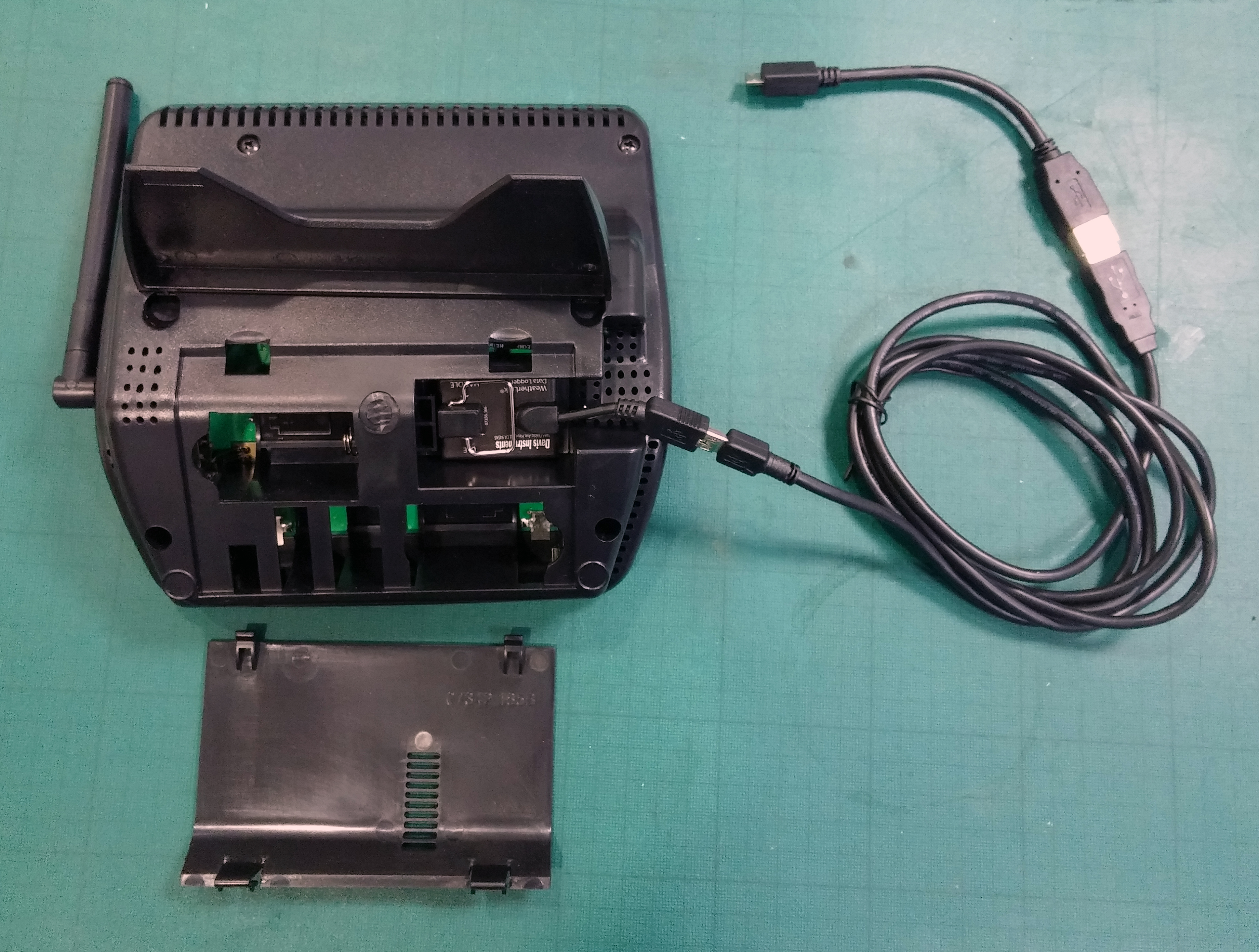
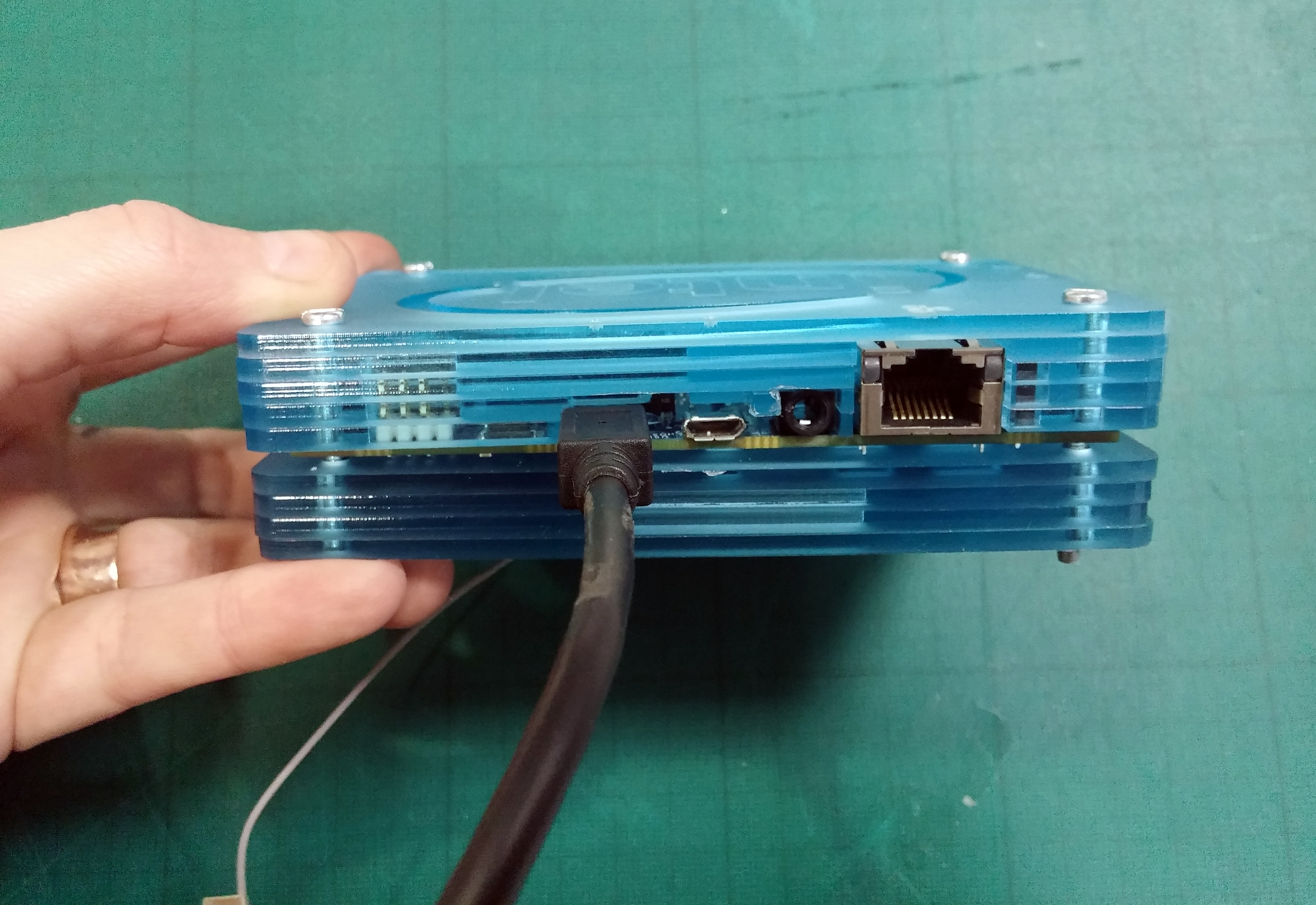
We're assuming your Davies Weather Station is already set up. If you need help with that, click here.
First, connect your cables together as seen in picture one. Next, open the back of the Davies Console PCU and plug in the Weatherlink Serial Converter as seen in picture two. Finally, plug the micro USB into the socket furthest away from the ethernet cable, as seen in picture three.
Turn Everything On
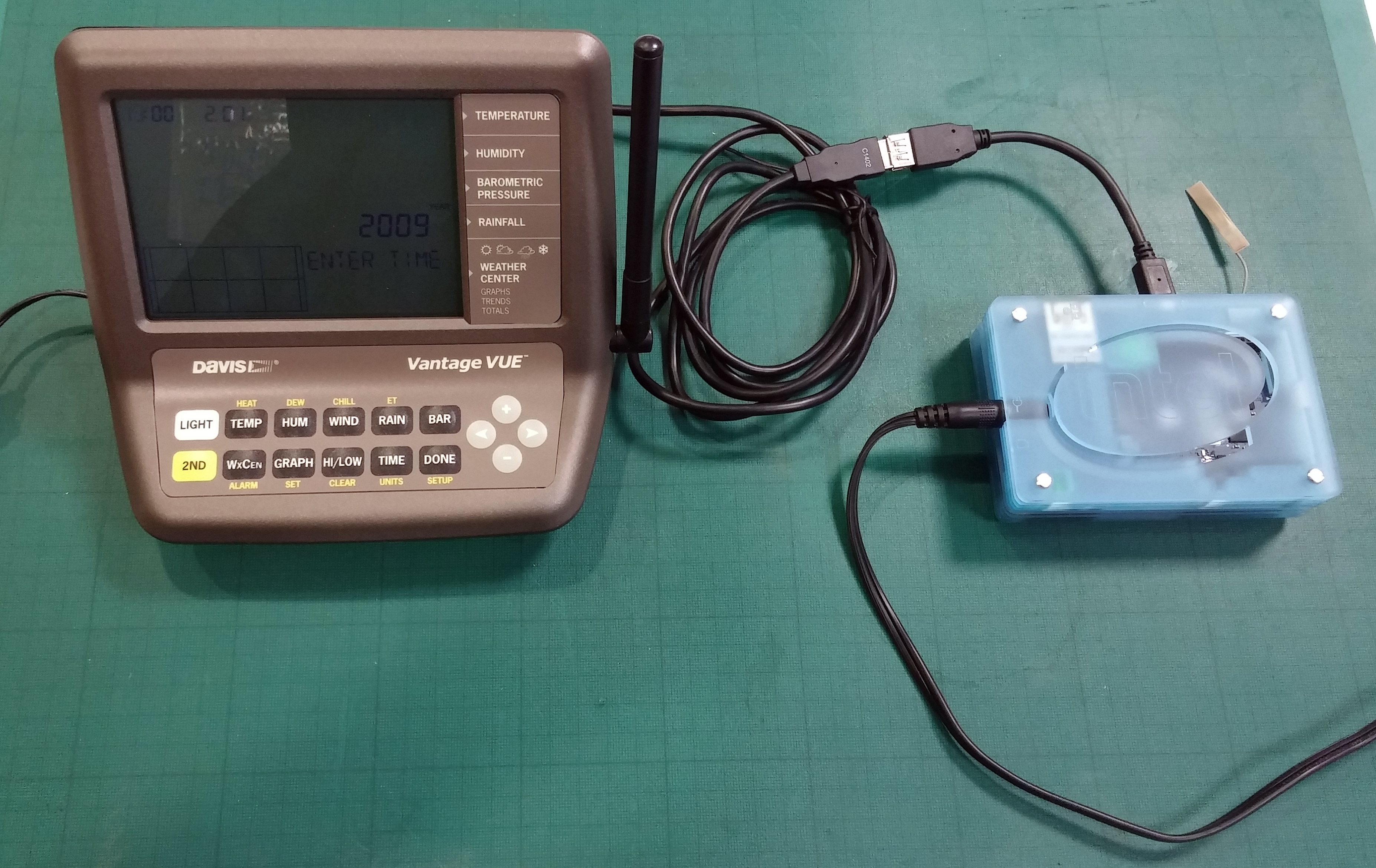

Plug in the power sources for both the Galileo (a small green light will come on) and the Davies Console PCU. Finally, hold down the "DONE" button on the Davies Console PCU - the screen in picture two should show.
That's it! You're done and dusted ... ready to start exploring some weather data? Have a look at this Instructables on how to use our Internet of (School) Things to explore your data or create an experiment.